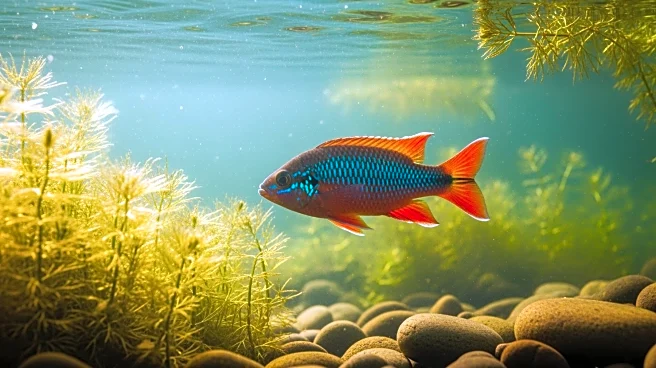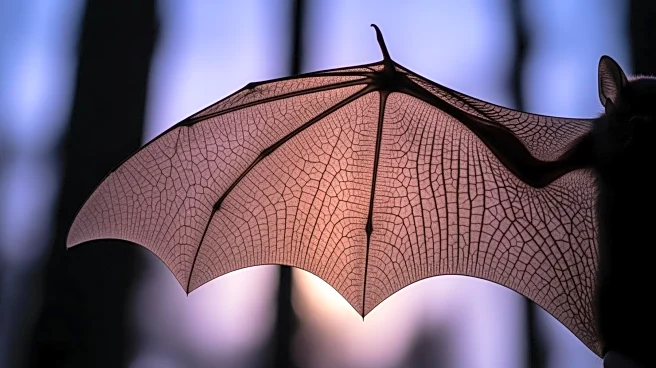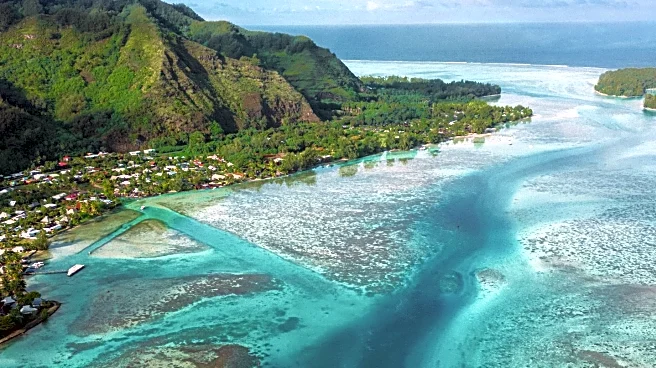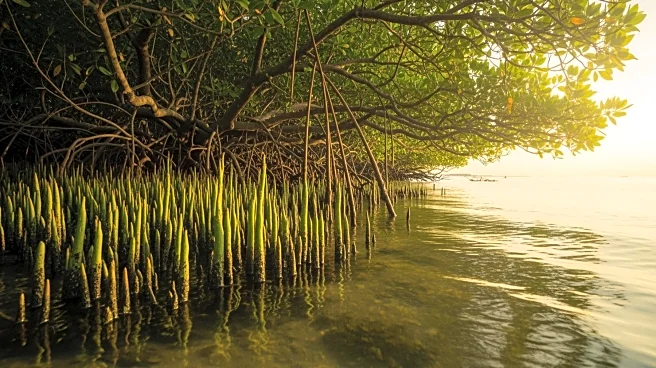What's Happening?
A fish species, Moema claudiae, previously thought to be extinct has been rediscovered in a small pond in Bolivia. This rare seasonal killifish had not been recorded in the wild for over 20 years, with
its known habitat largely destroyed due to agricultural development. The rediscovery presents a unique opportunity for conservation efforts to preserve a species believed to be lost forever. Researchers have documented the first live photographs of the species and gathered new information about its biology and ecology. The discovery also included six other species of seasonal killifish, marking the site as the most genetically diverse assemblage of these fish documented worldwide.
Why It's Important?
The rediscovery of Moema claudiae is significant for biodiversity conservation, particularly in Bolivia, a country experiencing high rates of tropical forest loss. The fish species is listed as Critically Endangered and possibly extinct by the IUCN. Protecting this habitat could preserve the only known location of living Moema claudiae and the most diverse area for rivulids in South America. This event highlights the importance of conserving temporary wetlands, which are easily modified and destroyed, posing a risk to endemic species. The discovery underscores the need for targeted conservation strategies to protect these vulnerable ecosystems.
What's Next?
Researchers hope that the rediscovered location will be protected to ensure the survival of Moema claudiae and other killifish species found there. Conservationists may advocate for legal protection of the area to prevent further agricultural encroachment. The study authors are likely to continue monitoring the site to gather more data on the species' ecology and population dynamics. This could lead to broader conservation initiatives aimed at preserving similar habitats across Bolivia and other regions facing ecological threats.
Beyond the Headlines
The rediscovery of Moema claudiae raises ethical considerations regarding human impact on biodiversity. It highlights the need for sustainable agricultural practices that balance development with conservation. The event may prompt discussions on the role of local communities in conservation efforts and the importance of integrating traditional ecological knowledge with scientific research. Long-term, this discovery could influence policy decisions related to land use and environmental protection in Bolivia and beyond.











